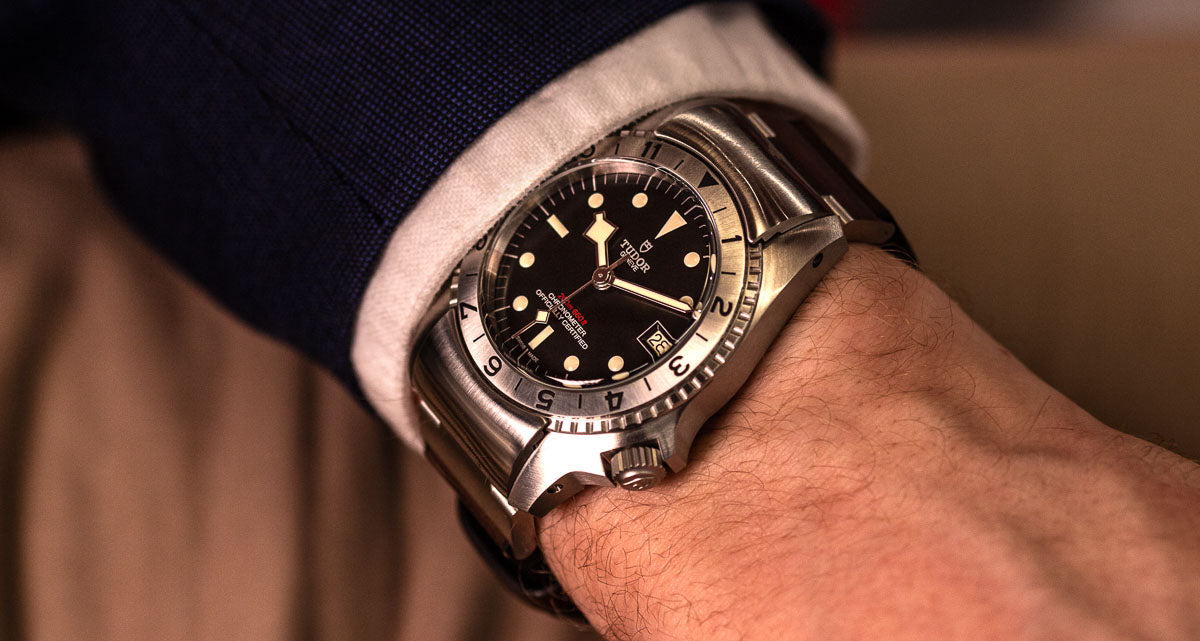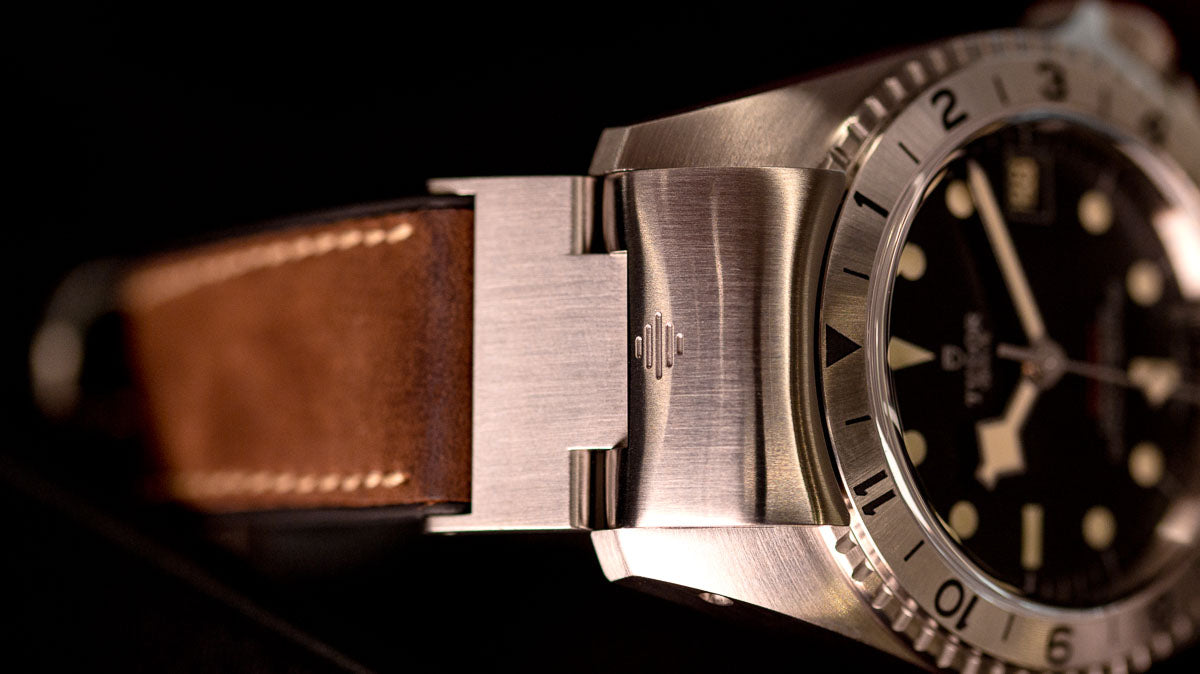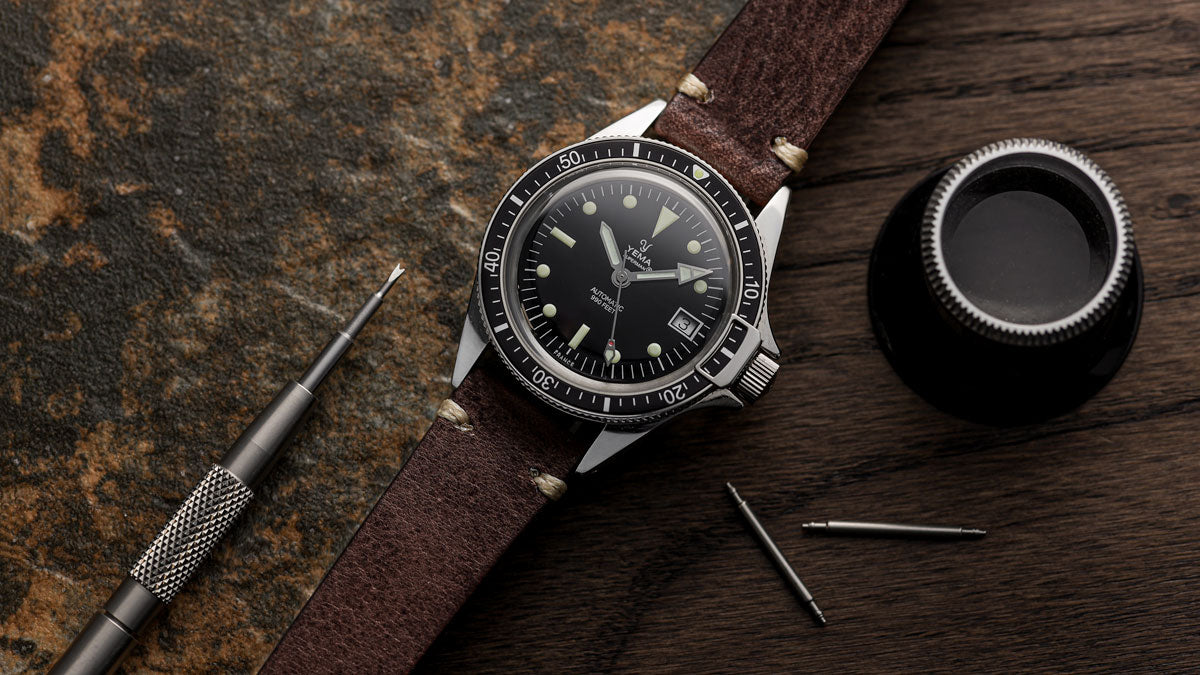Ever wonder what the little piece of metal is on Yema bezels? Let us explain...
Yema is one of those cult brands that’s got a big following from people in the know about the French company’s military and diving heritage. And that strong brand identity is helped by having a distinct look, which is unmistakeably Yema. The prominent bezel and oversized crown are definitely part of it, but of course, these elements are not just marketing accessories.
Instead, Yema’s history is all about the functional role that these watches play; the very essence of course of a ‘tool watch’.
And for tools to be effective, they also have to be foolproof: especially if operating in a critical environment. Those environments rarely come more critical than deep-sea diving, when even a small timing error can have lethal consequences. And that’s essentially how the locking bezel was born. The whole point of a standard rotating bezel is that it can be used to set a time limit in order to measure oxygen consumption, for example. But if the bezel can be moved, it could also be accidentally knocked.
As a result, some companies, led by Blancpain, began to develop unidirectional bezels – meaning that if they were moved accidentally, at least the mistake was on the side of caution. Those wanting added security could opt for a locking bezel: which firmly locks the bezel in place to ensure that there are no mishaps.

The famous Yema locking bezel on the Superman Heritage - Image Credit: WatchGecko Online Magazine
These days, a locking bezel is nothing new, but Yema were the first to make it a hallmark. The company’s reputation was built on diving watches (having been founded in 1948) and Yema soon achieved huge success, becoming the leading exporter of French watches in the 1960s with more than half a million watches sold every year across 50 countries.
Setting a trend

A beautiful example of an original Yema Superman - Image Credit: Yema Watches & @ledoublv
The Yema Superman – the company’s most iconic watch – was first seen in 1963. It looked conventional enough, apart from a strange bracket alongside the crown, which sat on top of the bezel but featured a window in order not to interrupt the view of the scale. That’s the locking bezel.
Normally, with the crown unscrewed, the bracket hangs loose. However, screw up the crown and the bracket then grips onto the bezel, clamping it firmly in place. That may not seem like particularly sophisticated technology, but as always, it’s a question of context. Many dive watch bezels back then were bidirectional and there were several bezels that didn't even click, just spinning relatively freely: so this was a genuinely useful innovation that became intrinsic to Yema.

The famous Yema locking bezel on the Superman Heritage - Image Credit: WatchGecko Online Magazine
The bezel lock was originally red, but on vintage watches, it’s hard to find any traces of colour now – their whole locking bezel principle worked by arresting movement by way of friction, so no surprise that the paint quickly wore off. The key disadvantage to this system is that you have to unscrew the crown to free the bezel (albeit not by much) which means that adjustments have to take place above the surface for ultimate peace of mind.
Other bezel locks from the rest of the industry...

The Omega Seamaster Ploprof - Image Credit: Monochrome Watches
There have been a number of other different solutions when it comes to keeping bezels where they are meant to be. The Omega Seamaster Ploprof from the 1960s has a massive case with a big orange button, a bit like a stopwatch, that acted as a bezel lock and release. Here, the bezel couldn’t be moved at all unless the button was pushed down, in a system developed in the 1970s with input from Jacques Cousteau: the king of the diving world.
The result may not have been exactly pretty, but the whole point is that it didn’t care: it was there to do a job.

The Glycine Airman - Image Credit: @thewatchdude2
The Glycine Airman (whose bezel could be rotated for users to tell the time in a different time zone) kept the bezel locked into place by screwing down a separate crown – a feature you still get on the Airman today – while Sinn streamlined the whole concept by making their bezel lock practically invisible, in contrast to the chunky bezel locks described so far.

The Tudor P01 Diver with its very prominent locking bezel - Image Credit: WatchGecko Online Magazine
These bezels are spring-loaded, so they need to be pushed before they are rotated, and even then, that’s only possible in one direction: a technique that anyone who has ever opened a bottle of mouthwash or bleach might be familiar with. TAG Heuer did something similar too with the Aquagraph.
Famously, Tudor took a very different approach with the Black Bay P01 ‘commando’, installing a metal ‘claw’ between the lugs at the top of the watch, which flips up and down to clamp the bezel in place once you have set it in the position you want. This was something that the company first experimented with in the 1960s, but it finally saw the light of day at Baselworld in 2019, to some degree of controversy.

The Tudor P01 Diver with its very prominent locking bezel - Image Credit: WatchGecko Online Magazine
To be honest, it’s hard to see why: in photographs, at least, you would be hard pushed to tell that there was a bezel lock in place. There’s an identical claw on the bottom lug, but it’s merely decorative, and both don’t disrupt the visual harmony of the design. Yema, by contrast, still puts the bezel lock at front and centre.
WatchGecko are an authorised retailer of Yema Watches in the UK
At WatchGecko you can buy a selection of Superman models on the website (including the bronze version, which probably polarises opinion even more than the locking bezel).
Because, in the end, nobody normal actually needs a locking bezel: which is obvious enough. But equally, who really needs 300 metres of water resistance, or a tachymeter – or many other of the accessories that adorn the tool watches we know and love? Ironically, the fact that these gadgets are largely useless for the majority of people only makes you play with them and appreciate them more.

The Yema Superman Bronze Bordeaux is available here! - Image Credit: WatchGecko Online Magazine
At WatchGecko, this sort of behaviour is something that we instinctively ‘get’ – and that’s one of the main reasons to buy from our store. We like to get under the skin of each brand, dissect its DNA, and celebrate all the quirks and features that make each watch special and tell the story of its heritage. That’s certainly the case for the Yema Superman and its pioneering bezel lock.
We have a delicately curated range of Yema watches available today on the WatchGecko site.
These are watches we have in stock here in the UK meaning once your order is placed, our team will work tirelessly to get the watch on your wrist within a matter of days. The only remaining question to answer is, which Superman will you go for?







